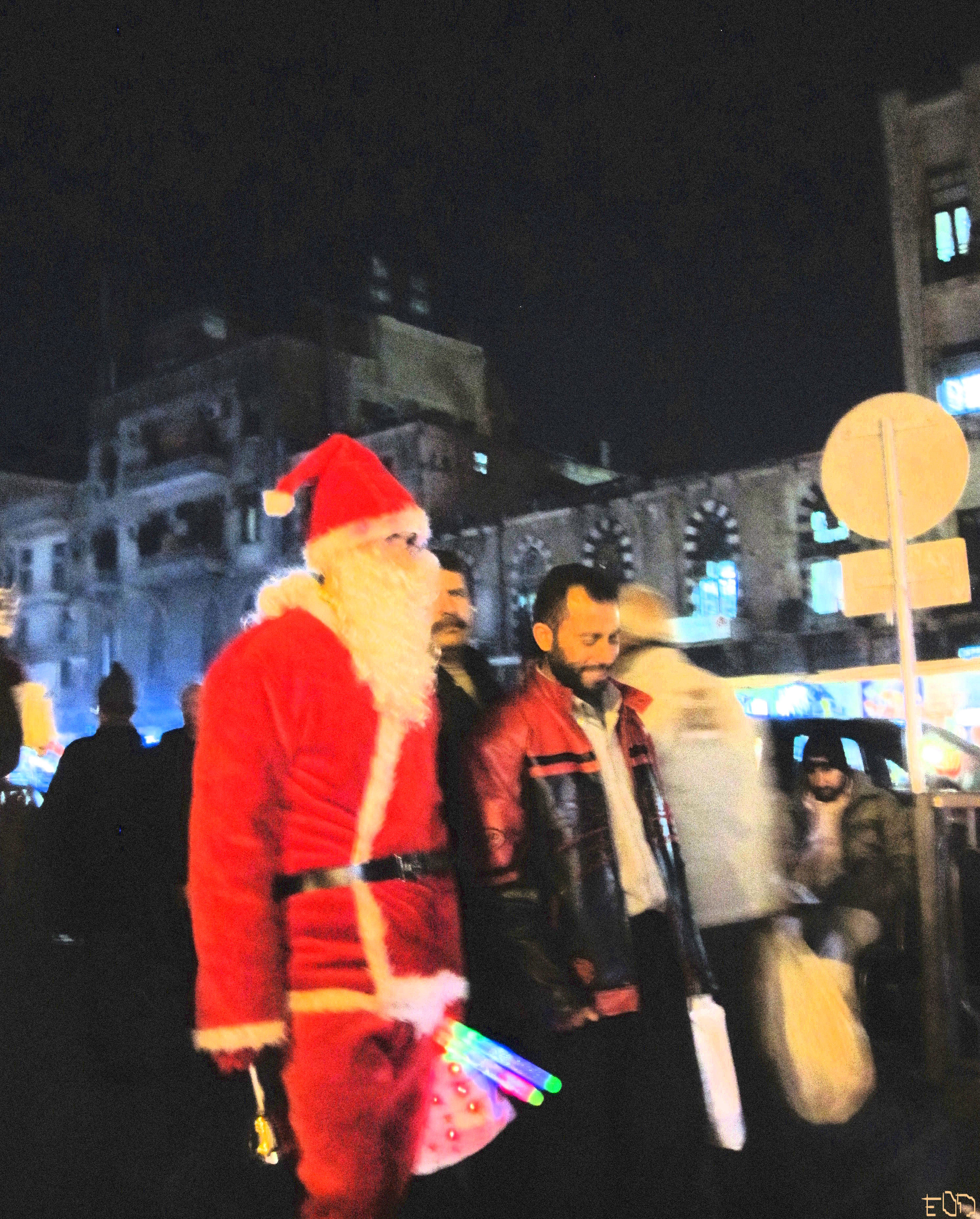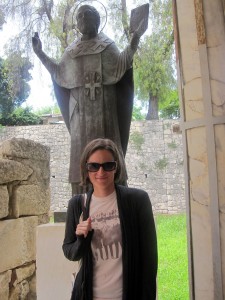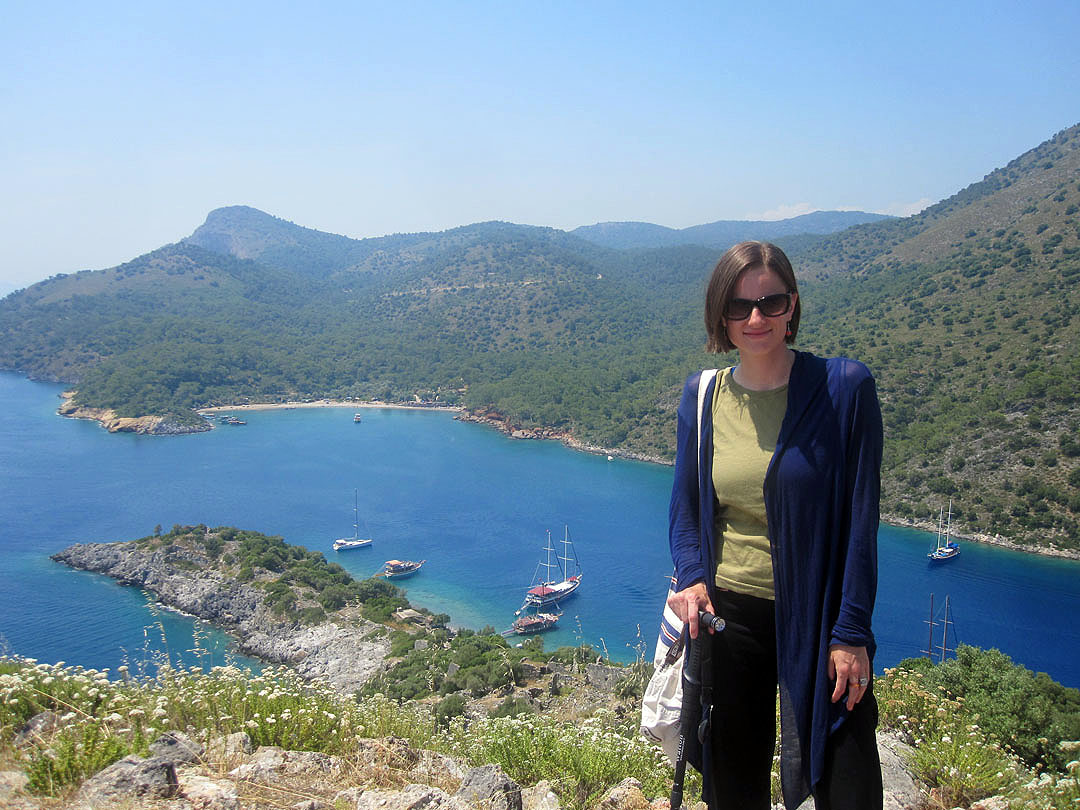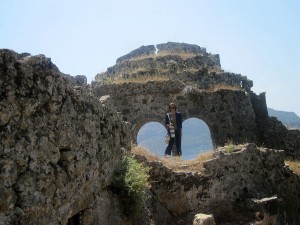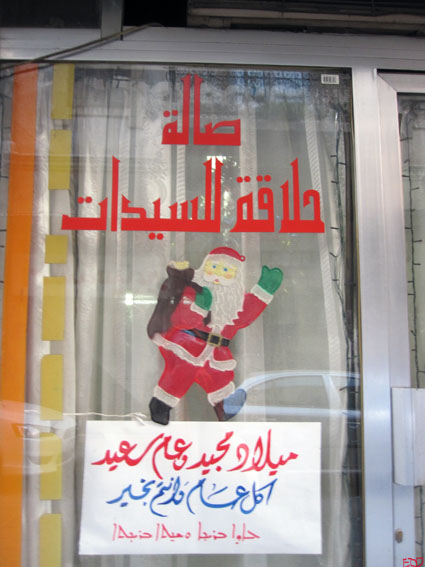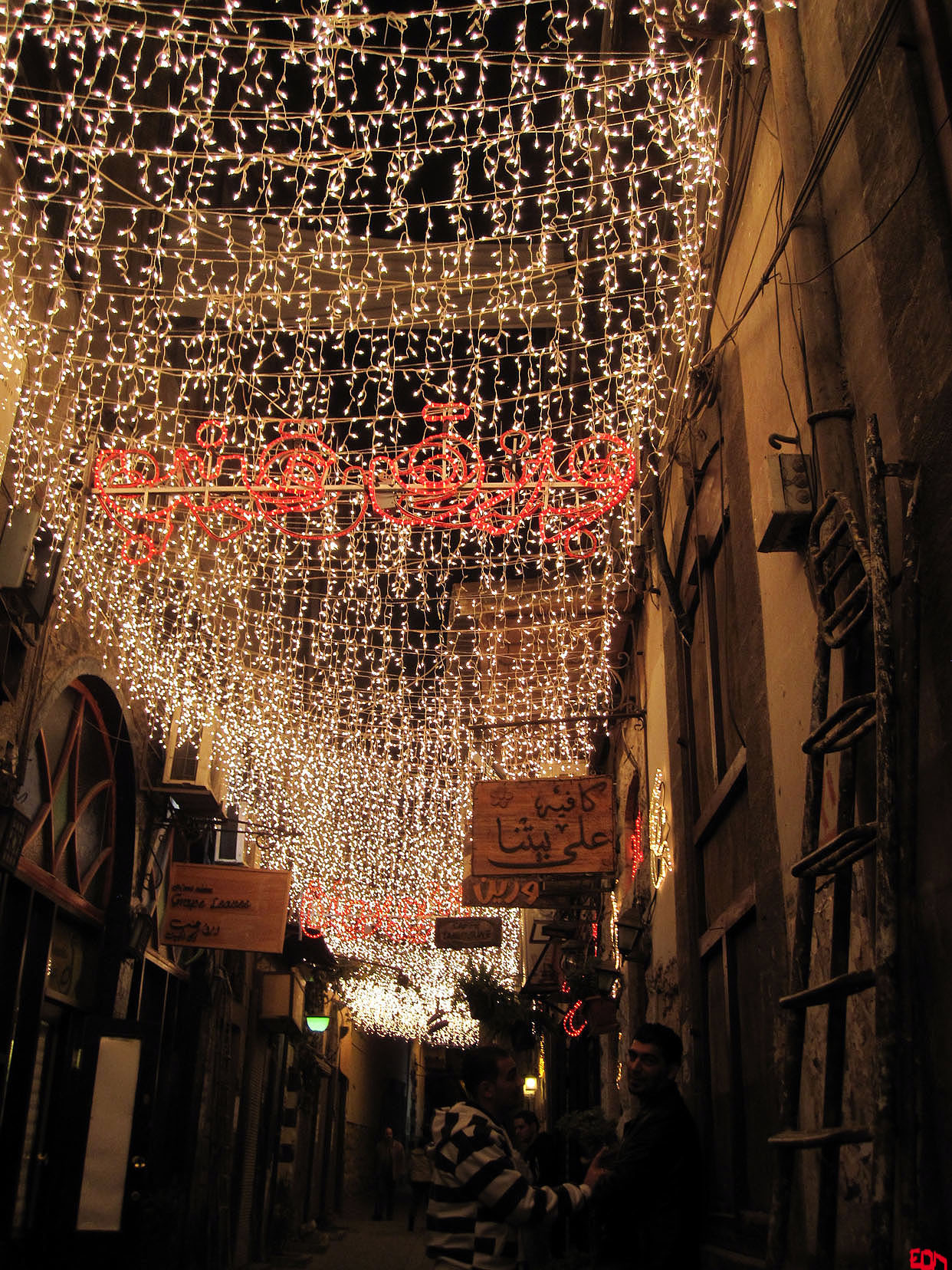One night in winter, when I was strolling through the streets of Damascus, I bumped into–who else–but Santa Claus. It wasn’t much of a surprise though, because it was Christmas time, and St. Nicholas has always had a long and close association with the Middle East. After all, he was originally from this region. Most people don’t realize that St. Nicholas was more of a Mediterranean man than a North Pole hermit.
St. Nicholas, the 4th century bishop known for giving gifts to the poor, lived out his saintly days in the sunshine of Myra in what is now modern-day Turkey–not in the frigid cold of the Arctic. So whenever I lead tours to Turkey, I always take my fellow travelers to Myra to see the Church of St. Nicholas, as well as a crumbling Roman amphitheater and tombs cut into the rocky hills. Myra has many statues (left) and frescoes dedicated to the famous saint who inspired the legend of Santa Claus. But our sunny “Santa” excursion doesn’t end there, since we also sail on over to St. Nicholas Island–one of the most beautiful places I have ever seen.
St. Nicholas Island is also called “Gemiler Island” or “Gemiler Adası”–meaning the “Island of Boats.” Its crescent cove is one of my favorite coves in the world–and you can easily see why. After docking our gulet on the island’s pristine shore, we usually hike up the island’s hill to get a view of the cove and sailboats below. On the steep walk up, most of the travelers use walking sticks to climb through crumbling churches from the 4th-6th century. It is said that the original tomb of St. Nicholas also rests on this island–but we have yet to find it.
The legend of this 4th century bishop, the patron saint of children and sailors, spread far and wide from Turkey. The “Santa Claus” version of his life seems to have developed from Scandinavian tales about his celebrated acts of generosity. In fact, he was so beloved in medieval Iceland that an epic poem, the Nikolassaga Biskupa, was composed in his honor. It wasn’t until the 19th century that “Santa” was embraced and promoted by companies as a way to capitalize on his image for the holidays.
All over the Middle East, I’ve enjoyed spotting “Santa” in places like Syria, Lebanon, and Egypt. It’s important to place this beloved saint in his original Mediterranean and Middle Eastern context–instead of just on the side of a can of Coke…
